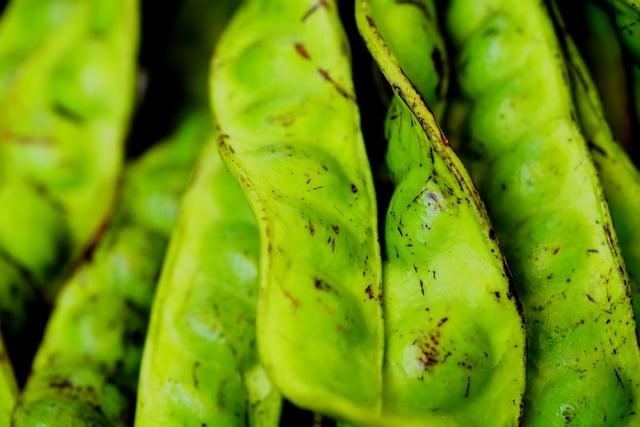Once upon a time, in a bustling city, two families prepared for their Thanksgiving feasts. The American family gathered around a golden turkey, stuffing, and cranberry sauce, sharing stories of gratitude and family traditions. Meanwhile, the Korean family celebrated Chuseok, laying out a vibrant spread of rice cakes, marinated meats, and seasonal fruits, honoring their ancestors with heartfelt rituals. As the sun set, both families raised their glasses, united by gratitude, yet beautifully distinct in their customs, each a tapestry of culture and love.
Table of Contents
- Cultural Roots and Historical Significance of Thanksgiving Celebrations
- Traditional Foods and Festive Feasts: A Culinary Comparison
- Family Gatherings and Social Customs: How Thanksgiving is Celebrated
- Reflections and Gratitude: The Meaning Behind the Holidays
- Q&A

Cultural Roots and Historical Significance of Thanksgiving Celebrations
The cultural roots of Thanksgiving celebrations in both Korea and America are deeply intertwined with their respective histories and traditions. In the United States, Thanksgiving traces its origins back to the early 17th century, when Pilgrims and Native Americans came together to celebrate the harvest. This event has evolved into a national holiday characterized by family gatherings, feasting, and expressions of gratitude. Traditional American dishes such as turkey, stuffing, and cranberry sauce symbolize abundance and the spirit of sharing. The holiday serves as a reminder of the complex relationships between different cultures and the importance of community, making it a significant occasion for reflection and appreciation.
In contrast, Korea celebrates Chuseok, a harvest festival that has been observed for centuries, rooted in agrarian customs and ancestral worship. This three-day holiday is a time for families to honor their ancestors through rituals known as **Charye**, where offerings of food are presented at family altars. The celebration features traditional foods like **songpyeon** (rice cakes) and **bulgogi** (marinated beef), emphasizing the importance of family ties and cultural heritage. Chuseok not only marks the end of the harvest season but also reinforces the values of gratitude and respect for one’s lineage, showcasing the rich tapestry of Korean culture and its historical significance in fostering familial bonds.

Traditional Foods and Festive Feasts: A Culinary Comparison
When it comes to celebrating gratitude through food, both Korean and American Thanksgivings offer a rich tapestry of traditional dishes that reflect their unique cultural heritages. In Korea, the Chuseok holiday is marked by a feast that includes **songpyeon** (rice cakes filled with sweetened sesame or beans), **bulgogi** (marinated beef), and an array of seasonal vegetables. Families gather to prepare and share these dishes, often emphasizing the importance of honoring ancestors through a ritual called **charye**, where food is presented on a ceremonial table. This act of remembrance is deeply woven into the fabric of the celebration, showcasing the significance of family and tradition in Korean culture.
In contrast, American Thanksgiving is characterized by a hearty spread that typically features **roast turkey**, **stuffing**, and **mashed potatoes**. The meal is often accompanied by **cranberry sauce**, **pumpkin pie**, and a variety of side dishes that vary by region and family tradition. The focus here is on abundance and togetherness, with many families gathering around the table to express gratitude for the blessings of the past year. While both celebrations center around food and family, the American Thanksgiving leans more towards a festive gathering, whereas Chuseok emphasizes ancestral respect and the harvest’s bounty, highlighting the distinct cultural values that shape each holiday’s culinary offerings.

Family Gatherings and Social Customs: How Thanksgiving is Celebrated
Thanksgiving in America is a vibrant tapestry of traditions, where families gather to express gratitude and share a bountiful feast. The centerpiece of this celebration is often a **roasted turkey**, accompanied by an array of side dishes such as **stuffing, cranberry sauce, and mashed potatoes**. Families typically come together, sometimes traveling long distances, to enjoy a meal that symbolizes unity and appreciation. The day is often filled with activities like watching parades, playing football, and sharing stories, creating a warm atmosphere that fosters connection and reflection.
In contrast, Korean Thanksgiving, known as **Chuseok**, is deeply rooted in honoring ancestors and celebrating the harvest. Families prepare a special meal called **songpyeon**, which are rice cakes filled with sweet ingredients, and offer them during ancestral rites known as **charye**. The celebration emphasizes respect for family lineage and the importance of gratitude for the earth’s bounty. Traditional dishes served during Chuseok include **galbijjim** (braised short ribs) and various seasonal vegetables, showcasing the rich flavors of Korean cuisine. This holiday not only strengthens familial bonds but also reinforces cultural heritage through its customs and rituals.

Reflections and Gratitude: The Meaning Behind the Holidays
As the leaves change color and the air turns crisp, both Korean and American Thanksgivings invite us to pause and reflect on the blessings in our lives. In Korea, Chuseok, often referred to as Korean Thanksgiving, is a time for families to come together and honor their ancestors through ancestral rites known as Charye. This practice not only strengthens familial bonds but also instills a deep sense of gratitude for the harvest and the sacrifices of those who came before us. The essence of Chuseok lies in its emphasis on family unity and the appreciation of the land’s bounty, reminding us of our roots and the importance of giving thanks for what we have.
In contrast, American Thanksgiving is characterized by its festive gatherings and the iconic turkey feast, symbolizing abundance and togetherness. While the holiday also encourages reflection and gratitude, it often leans towards a more communal celebration, where friends and family share stories and laughter around the dinner table. The spirit of Thanksgiving in the United States is encapsulated in the act of sharing—whether it’s sharing a meal, sharing memories, or sharing kindness with those in need. Both holidays, despite their cultural differences, serve as poignant reminders of the importance of gratitude, connection, and the celebration of life’s blessings.
Q&A
-
What are the names of the holidays?
Korean Thanksgiving is known as Chuseok, while American Thanksgiving is simply called Thanksgiving.
-
When are these holidays celebrated?
Chuseok is celebrated on the 15th day of the 8th month of the lunar calendar, usually falling in late September or early October. In contrast, American Thanksgiving is celebrated on the fourth Thursday of November.
-
What are the traditional foods associated with each holiday?
During Chuseok, families enjoy songpyeon (rice cakes) and various traditional dishes, while American Thanksgiving is famous for its roast turkey, stuffing, and pumpkin pie.
-
What are the main cultural practices during these holidays?
Chuseok involves honoring ancestors through jesa (ritual ceremonies) and family gatherings, whereas American Thanksgiving focuses on family reunions, sharing meals, and expressing gratitude.
while both Korean and American Thanksgivings celebrate gratitude and family, their unique traditions and flavors reflect rich cultural heritages. Embracing these differences enriches our understanding of gratitude across the globe.

大家好,我是彼得潘,專業的手法身體治療師。我喜歡探索和研究各種主題,並透過與人工智慧的合作分享專業、實用、有趣的文章。我們定期進行人工審核,以確保內容的準確性。如果您發現文章中有任何不準確的地方,請隨時與我們聯繫,我們會及時糾正。您可以透過 [email protected] 與我們聯繫。



